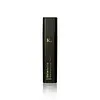What's inside
What's inside
 Key Ingredients
Key Ingredients

 Benefits
Benefits

 Ingredients Side-by-side
Ingredients Side-by-side

Water
Skin ConditioningCyclopentasiloxane
EmollientPanthenol
Skin ConditioningGlycerin
HumectantHydrogenated Polyisobutene
EmollientDimethicone Crosspolymer
Emulsion StabilisingPEG/PPG-18/18 Dimethicone
EmulsifyingXylitylglucoside
HumectantAnhydroxylitol
HumectantXylitol
HumectantMagnesium Aspartate
Skin ConditioningZinc Gluconate
Skin ConditioningCopper Gluconate
Skin ConditioningSodium Hyaluronate
HumectantBetaine
HumectantPhenoxyethanol
PreservativeEthylhexylglycerin
Skin ConditioningPentylene Glycol
Skin ConditioningAllantoin
Skin ConditioningCarbomer
Emulsion StabilisingMagnesium Sulfate
Hydroxyethyl Acrylate/Sodium Acryloyldimethyl Taurate Copolymer
Emulsion StabilisingWater, Cyclopentasiloxane, Panthenol, Glycerin, Hydrogenated Polyisobutene, Dimethicone Crosspolymer, PEG/PPG-18/18 Dimethicone, Xylitylglucoside, Anhydroxylitol, Xylitol, Magnesium Aspartate, Zinc Gluconate, Copper Gluconate, Sodium Hyaluronate, Betaine, Phenoxyethanol, Ethylhexylglycerin, Pentylene Glycol, Allantoin, Carbomer, Magnesium Sulfate, Hydroxyethyl Acrylate/Sodium Acryloyldimethyl Taurate Copolymer
Water
Skin ConditioningButylene Glycol
HumectantGlycerin
HumectantCyclopentasiloxane
EmollientCaprylyl Glycol
EmollientSodium Acrylates/Beheneth-25 Methacrylate Crosspolymer
Skin ConditioningVitis Vinifera Seed Extract
AntimicrobialTocopheryl Acetate
AntioxidantSodium Ascorbyl Phosphate
AntioxidantGlutathione
Centella Asiatica Extract
CleansingHelianthus Annuus Seed Oil
EmollientSqualane
EmollientPanthenol
Skin ConditioningCopper Tripeptide-1
Skin ConditioningSodium Carboxymethyl Beta-Glucan
CleansingCeramide EOP
Skin ConditioningCeramide Ns
Skin ConditioningCeramide NP
Skin ConditioningCeramide As
Skin ConditioningCeramide AP
Skin ConditioningGlyceryl Diisostearate/Hydrogenated Rosinate
Skin ConditioningMethylpropanediol
SolventDidecyldimonium Chloride
EmulsifyingPolyquaternium-80
CleansingHydroxypropyl Methylcellulose
Emulsion StabilisingEDTA
Water, Butylene Glycol, Glycerin, Cyclopentasiloxane, Caprylyl Glycol, Sodium Acrylates/Beheneth-25 Methacrylate Crosspolymer, Vitis Vinifera Seed Extract, Tocopheryl Acetate, Sodium Ascorbyl Phosphate, Glutathione, Centella Asiatica Extract, Helianthus Annuus Seed Oil, Squalane, Panthenol, Copper Tripeptide-1, Sodium Carboxymethyl Beta-Glucan, Ceramide EOP, Ceramide Ns, Ceramide NP, Ceramide As, Ceramide AP, Glyceryl Diisostearate/Hydrogenated Rosinate, Methylpropanediol, Didecyldimonium Chloride, Polyquaternium-80, Hydroxypropyl Methylcellulose, EDTA
 Reviews
Reviews

Ingredients Explained
These ingredients are found in both products.
Ingredients higher up in an ingredient list are typically present in a larger amount.
Cyclopentasiloxane, or D5, is a silicone used to improve texture of products and trap moisture.
D5 is considered lightweight and volatile. Volatile means it evaporates quickly after application. Once evaporated, D5 leaves a thin barrier that helps keep skin hydrated.
It is also an emollient. Emollients help soften the skin and prevent water loss. Silicones create a silky texture in products. D5 helps other ingredients become more spreadable.
Studies show D5 is safe to use in skincare products. We recommend speaking with a skincare professional if you have concerns.
Learn more about CyclopentasiloxaneGlycerin is already naturally found in your skin. It helps moisturize and protect your skin.
A study from 2016 found glycerin to be more effective as a humectant than AHAs and hyaluronic acid.
As a humectant, it helps the skin stay hydrated by pulling moisture to your skin. The low molecular weight of glycerin allows it to pull moisture into the deeper layers of your skin.
Hydrated skin improves your skin barrier; Your skin barrier helps protect against irritants and bacteria.
Glycerin has also been found to have antimicrobial and antiviral properties. Due to these properties, glycerin is often used in wound and burn treatments.
In cosmetics, glycerin is usually derived from plants such as soybean or palm. However, it can also be sourced from animals, such as tallow or animal fat.
This ingredient is organic, colorless, odorless, and non-toxic.
Glycerin is the name for this ingredient in American English. British English uses Glycerol/Glycerine.
Learn more about GlycerinPanthenol is a common ingredient that helps hydrate and soothe the skin. It is found naturally in our skin and hair.
There are two forms of panthenol: D and L.
D-panthenol is also known as dexpanthenol. Most cosmetics use dexpanthenol or a mixture of D and L-panthenol.
Panthenol is famous due to its ability to go deeper into the skin's layers. Using this ingredient has numerous pros (and no cons):
Like hyaluronic acid, panthenol is a humectant. Humectants are able to bind and hold large amounts of water to keep skin hydrated.
This ingredient works well for wound healing. It works by increasing tissue in the wound and helps close open wounds.
Once oxidized, panthenol converts to pantothenic acid. Panthothenic acid is found in all living cells.
This ingredient is also referred to as pro-vitamin B5.
Learn more about PanthenolWater. It's the most common cosmetic ingredient of all. You'll usually see it at the top of ingredient lists, meaning that it makes up the largest part of the product.
So why is it so popular? Water most often acts as a solvent - this means that it helps dissolve other ingredients into the formulation.
You'll also recognize water as that liquid we all need to stay alive. If you see this, drink a glass of water. Stay hydrated!
Learn more about Water